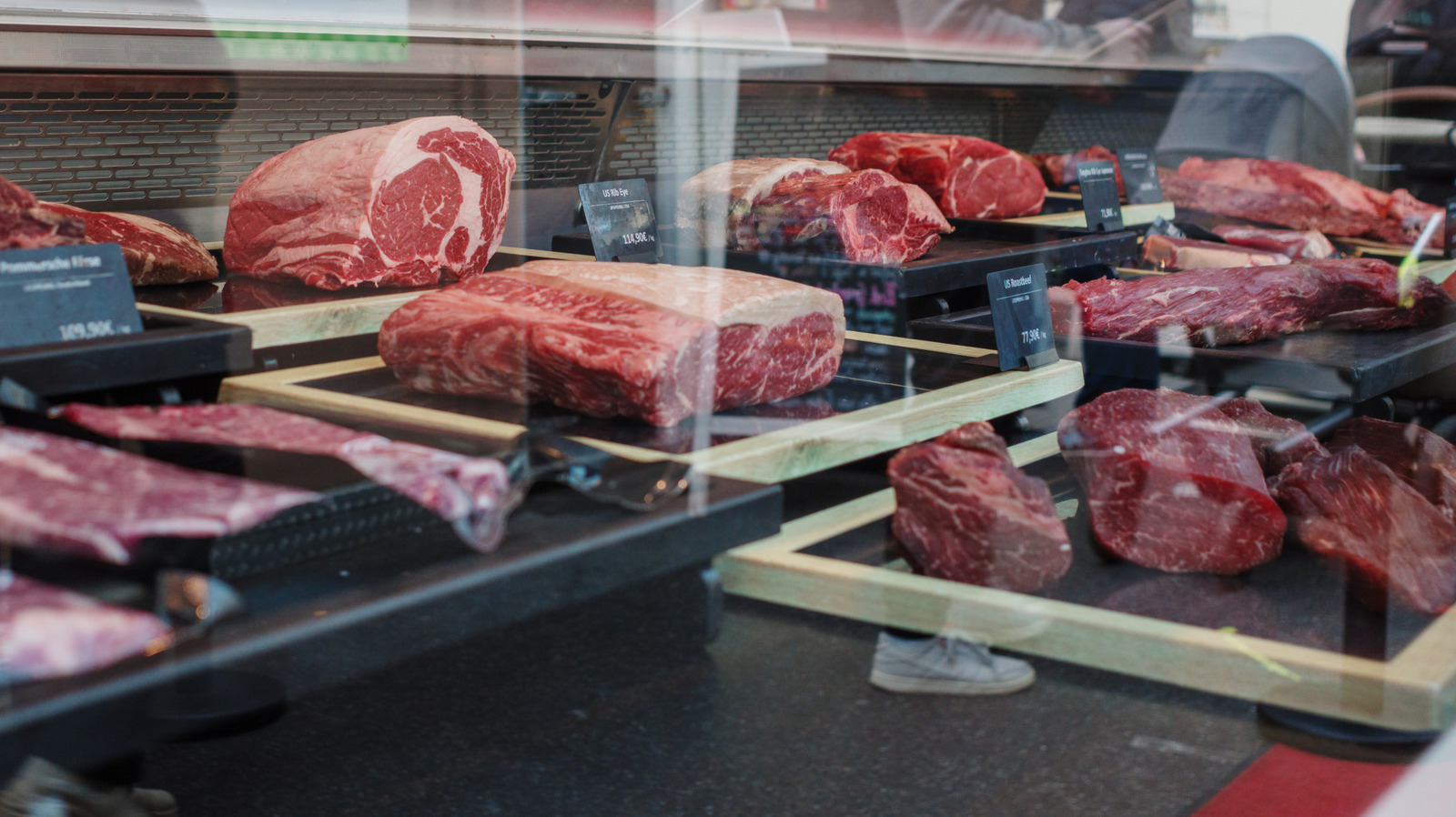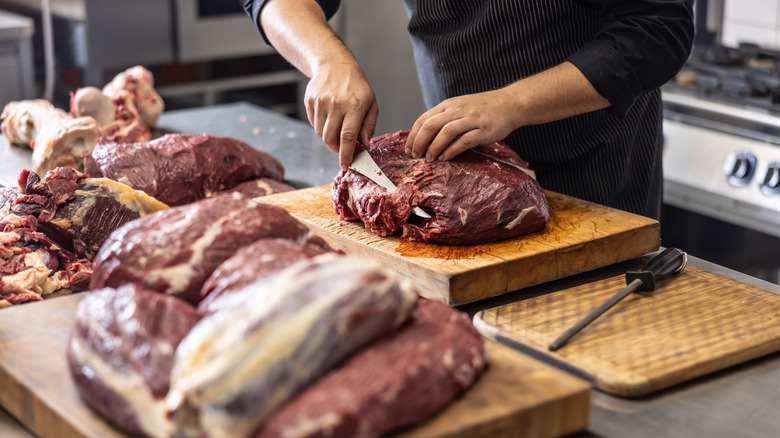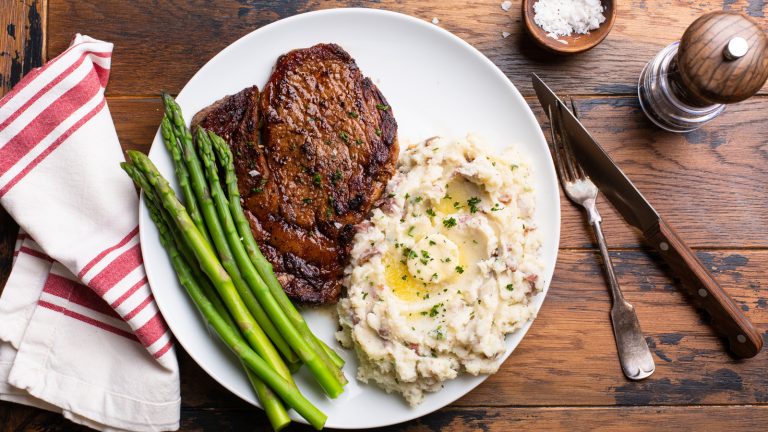If you have ever noticed a vacuum-sealed pack of beef in the grocery store that’s colored a deep purple instead of bright red, don’t panic. That moody color doesn’t mean your meat is bad. It’s just a little science at work. In fact, that purple hue is often a sign of freshness before the beef has been exposed to air.
At its meaty core, beef gets its color from a protein called myoglobin. When beef is freshly cut and has limited exposure to air, myoglobin stays in its purplish-red natural state. This is called deoxymyoglobin (try saying that five times fast). It is only when meat gets cozy with oxygen that it changes color, turning that bright cherry red that most of us are trained to think of as “fresh” beef.
So what’s going on when you see that deep purple? It’s simple: Vacuum-sealing or tightly packed conditions keep oxygen away, leaving the myoglobin in its original, purplish state. Grocery store meat departments that sell meat in bulk, or butchers that vacuum-pack steaks to preserve shelf life, often end up showcasing this more “private” side of beef. It is like seeing your favorite celebrity without makeup — still the same, just a little less filtered.
The cool part? Once you open the package and let that purple beef hang out in the air for a few minutes, oxygen works its magic. The meat will slowly “bloom,” shifting to that familiar, vibrant red in usually about 10 to 20 minutes.
Determining freshness beyond color
Of course, color alone shouldn’t be your only freshness detector. Always give your meat the classic smell and feel tests, too. Fresh beef should smell clean — think neutral or slightly metallic. If it smells sweet, sour, ammonia-like, or just off, it’s not worth the risk.
Texture matters too. A steak should feel firm and springy, not mushy or sticky. Press it with a finger — it should bounce back slightly, not squish flat. Ground beef will be softer than steak, and when squeezed or pressed, it should fall apart. It still shouldn’t feel slimy, though.
When trying to choose the best ground beef at the grocery store or assess the freshness of some in your fridge, color shifts like brown or gray patches don’t always mean spoilage. Sometimes it is just a lack of oxygen. But if the discoloration is widespread — particularly showing up on the surface — and the beef smells or feels wrong, trust your instincts and toss it. To keep beef fresh longer, store it in the coldest part of the fridge (ideally below 40 degrees Fahrenheit). Use ground beef within one to two days, and steaks and roasts within three to five. Sealing your just-bought meat with one of the best vacuum sealers can help lock in freshness and preserve that safe, oxygen-free purple color.
So the next time you spot a package of beef that looks more “Prince concert” than “steakhouse chic,” don’t be alarmed. That purple color is beef’s natural “off-duty” look, waiting patiently for a little oxygen and a lot of delicious possibilities. After all, in the grocery world, it’s what’s inside that counts.






